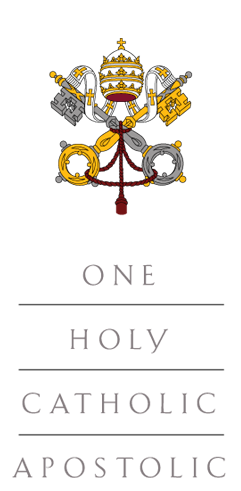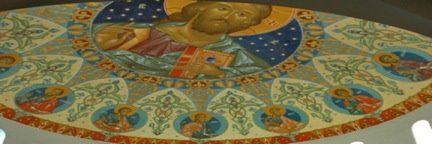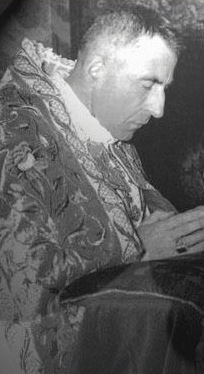
MID PENTECOST
Jesus Christ Teaching in the Temple
This icon portrays Christ as a youth teaching the elders in the Temple, but it is used to commemorate his teaching in the Temple in the middle of the Feast of Tabernacles in John 7, which happens in the Autumn of the year. But it was a time for blessing the waters as a foreshadowing of the pouring out of the Holy Spirit at Pentecost. At the end of this feast, Jesus gave the promise of the Holy Spirit:
"In the last day, that great day of the feast, Jesus stood and cried, saying, If any man thirst, let him come unto me, and drink.
He that believeth on me, as the scripture hath said, out of his belly shall flow rivers of living water.
(But this spake he of the Spirit, which they that believe on him should receive: for the Holy Spirit was not yet given; because that Jesus was not yet glorified.)" -John 7:37-39
That is why this feast is midway between Paskha and Pentecost, connecting the two.
Hymn of the feast
In the midst of this Feast, O Savior, give thou my thirsty soul to drink of the waters of true worship; for thou didst call out to all, saying, Whosoever is thirsty, let him come to me and drink. Wherefore, O Christ our God, Fountain of life, glory to thee.
Mid-Pentecost or Midfeast is a feast day which occurs during the Paskhal season in the Eastern Catholic Churches which follow the Byzantine Rite.
Mid-Pentecost celebrates the midpoint between the Feasts of Paskha (Easter) and Pentecost. Specifically, it falls on the 25th day of Paskha.
Mid-Pentecost is a one-week feast which begins on the 4th Wednesday of Paskha, and continues until the following Wednesday. That is to say, it has an Afterfeast of seven days. Throughout these eight days (including the day of the feast) hymns of Mid-Pentecost are joined to those of the Paskhal season. Many of the hymns from the first day of the feast are repeated on the Apodosis (leave-taking of the feast). Although it is ranked as a Feast of the Lord and has an Afterfeast, Mid-Pentecost itself is not considered to be one of the Great Feasts of the Church year.
The liturgical texts for the feast are found in the Pentecostarion (the liturgical book containing propers for the period from Paskha to Pentecost). There are three Old Testament readings appointed for Vespers; but, uniquely, no Matins Gospel. In some places an All-Night Vigil is celebrated for this feast, though a Vigil is not called for in the Typicon (book of rubrics). At the Divine Liturgy, the reading from the Apostle is Acts 14:6-18.
The theme of the feast is Christ as Teacher, based upon the words from the Gospel of the day (John 7:14-30): "Now about the midst of the feast Jesus went up into the temple, and taught...Jesus answered them, and said, My doctrine is not mine, but his that sent me. If any man will do his will, he shall know of the doctrine, whether it be of God, or whether I speak of myself."
The icon of the feast depicts the young Jesus in the Temple in Jerusalem speaking with the Elders (Luke 2:46-47), the first biblical example of Jesus as teacher (Rabbi). In traditional Orthodox icons of this subject, the figure of Jesus is depicted larger than those of the Elders, showing his superior spiritual status.
The Troparion of the Feast hints at the encounter of Jesus with the Samaritan Woman, which will be celebrated on the following Sunday:
In the middle of the Feast, O Savior, fill my thirsting soul with the waters of godliness, as You did cry to all: 'If anyone thirst, let him come to Me and drink' (John 7:37). O Christ God, Fountain of our life, glory be to You!
The scripture verse from John 7, quoted by the Troparion, will be read on the day of Pentecost.
Mid-Pentecost, has historically been the Altar Feast of the Cathedral of Hagia Sophia in Constantinople.







































No comments:
Post a Comment